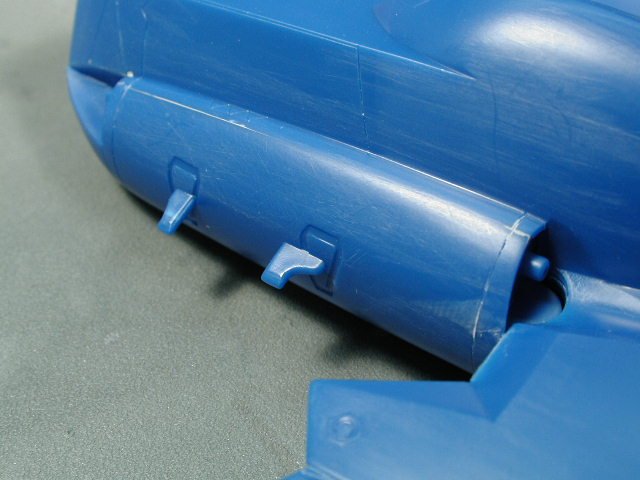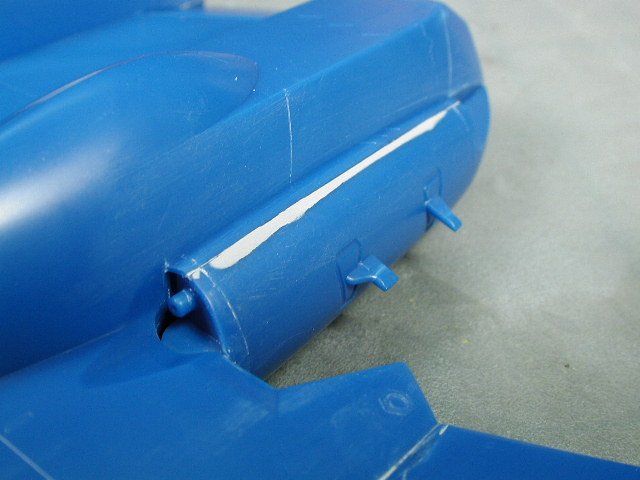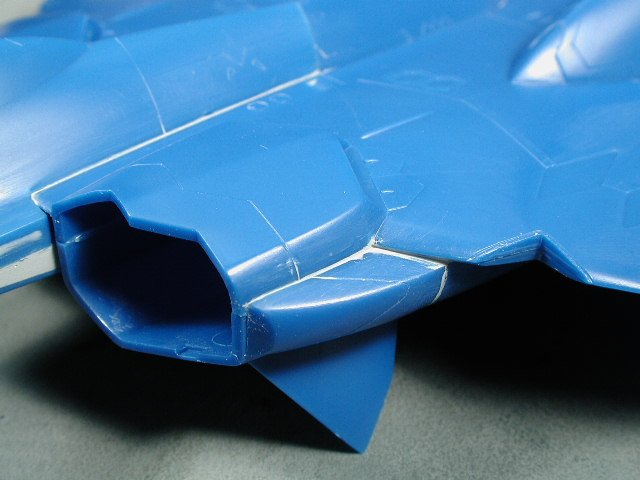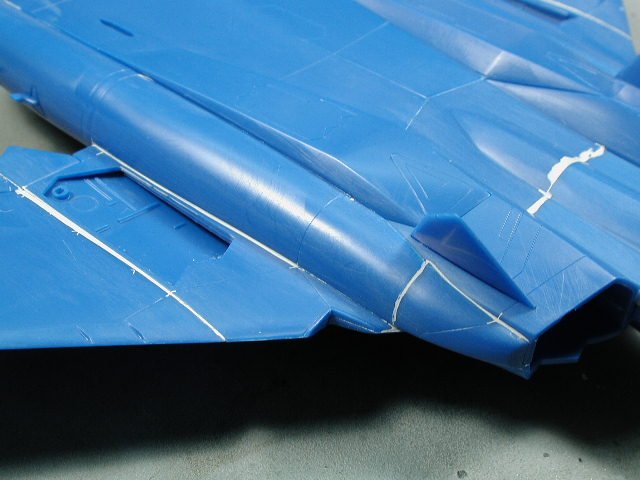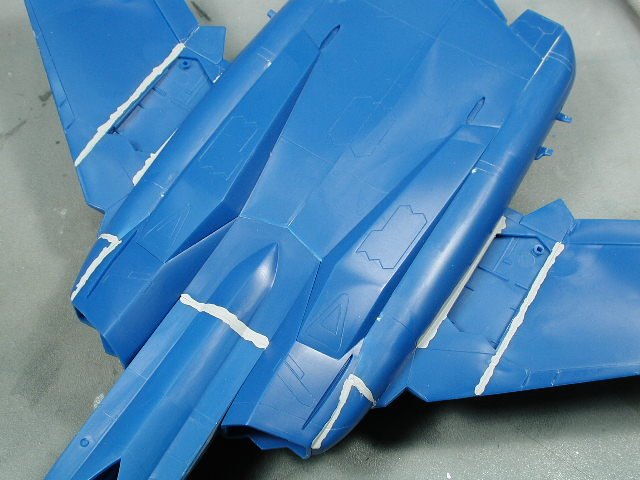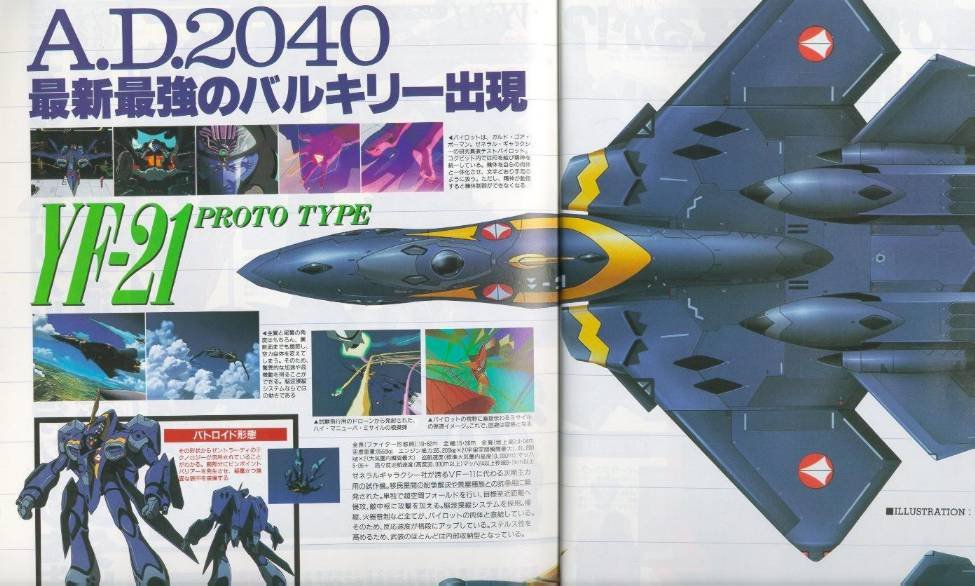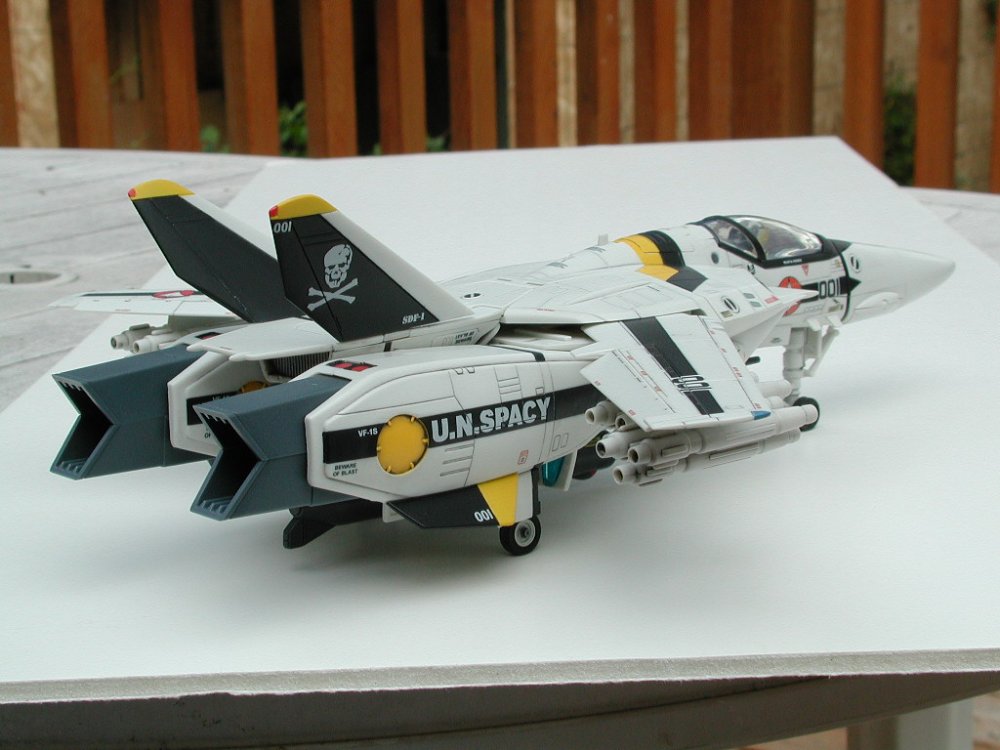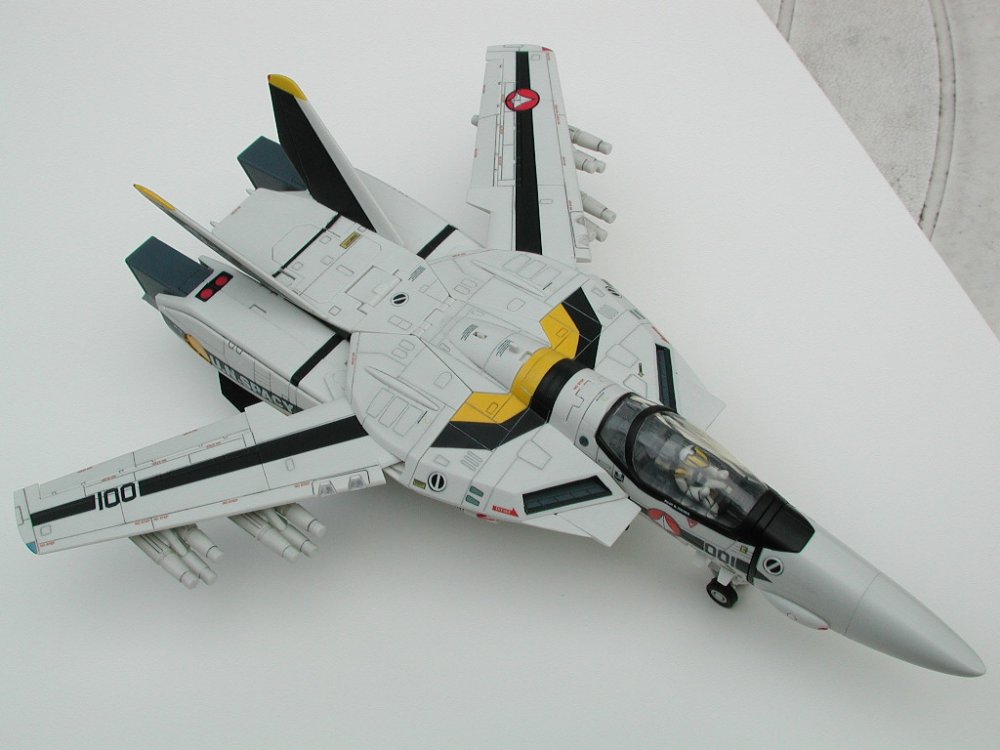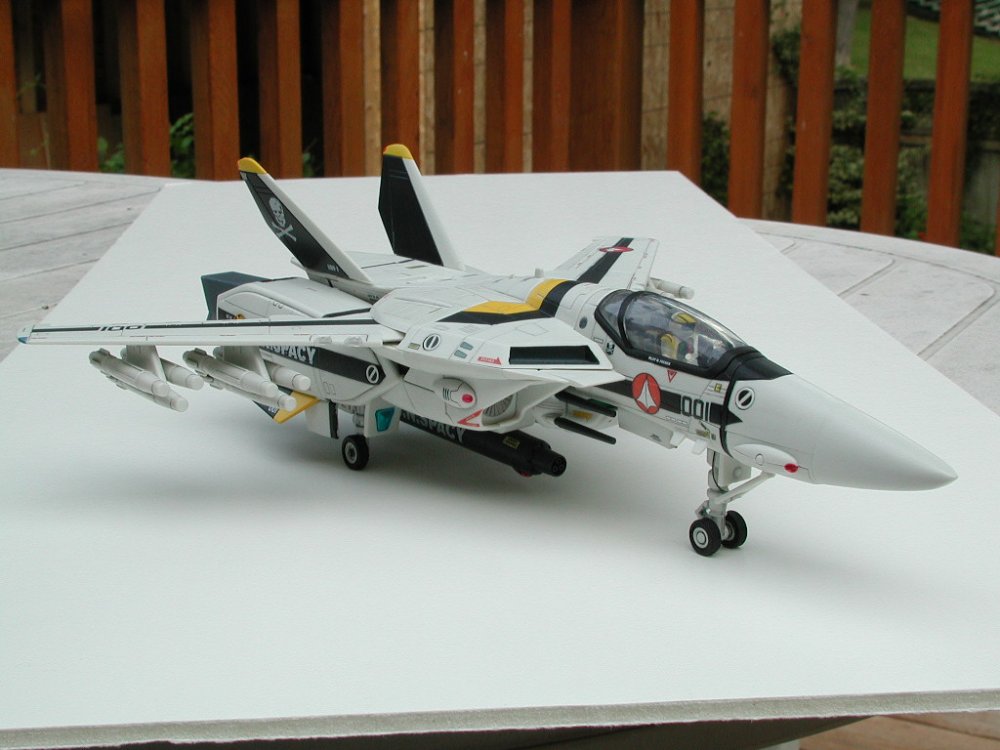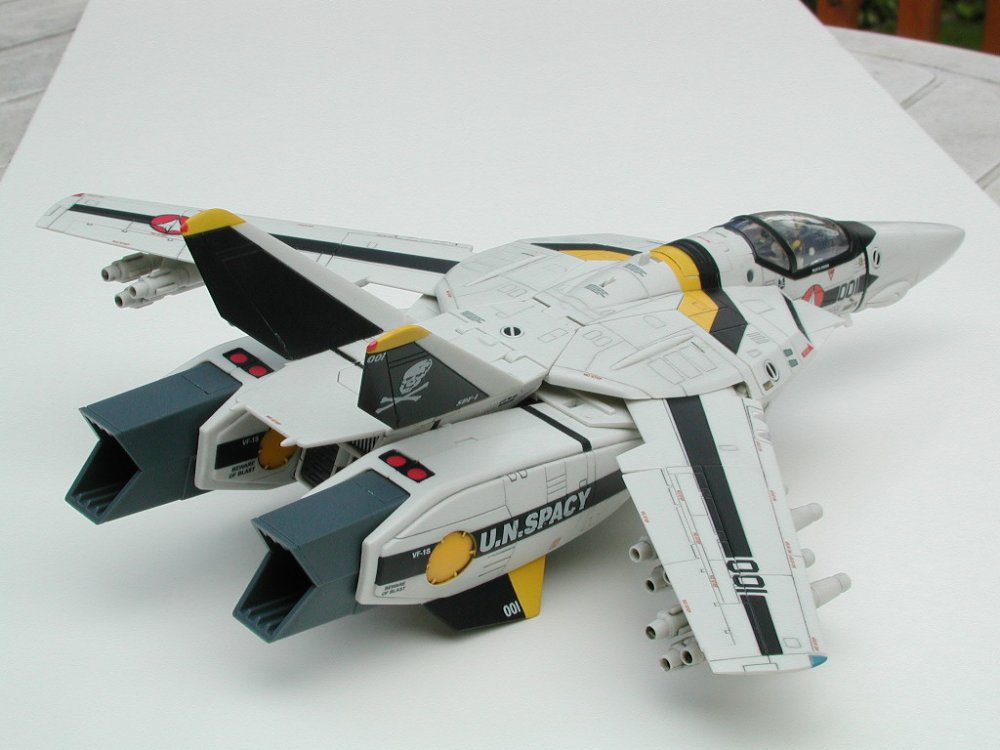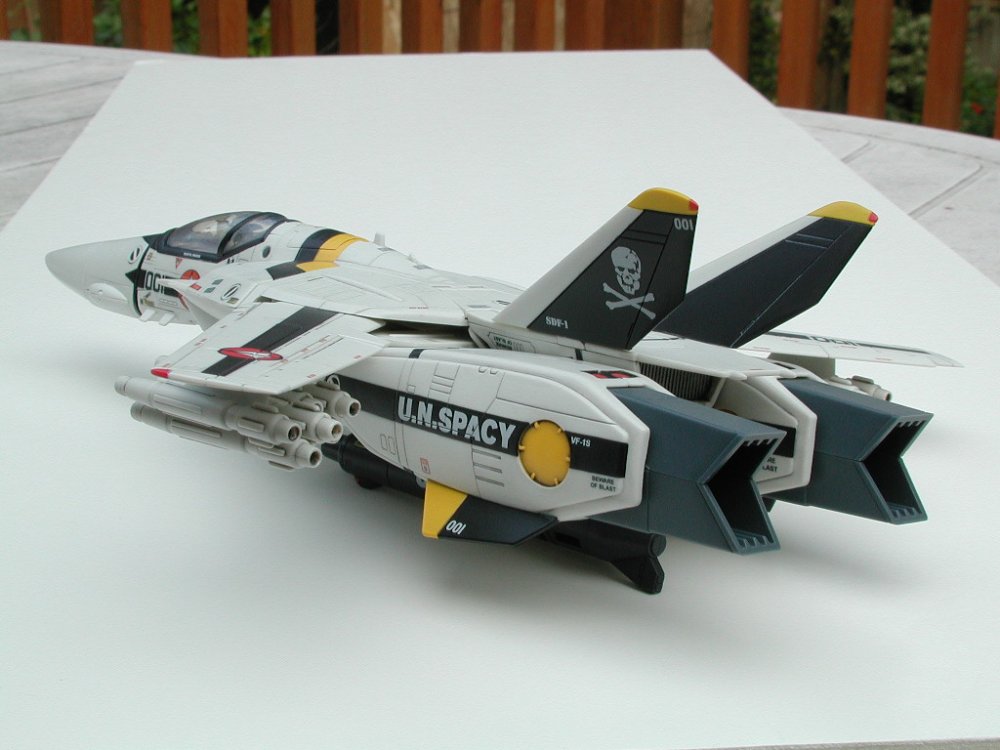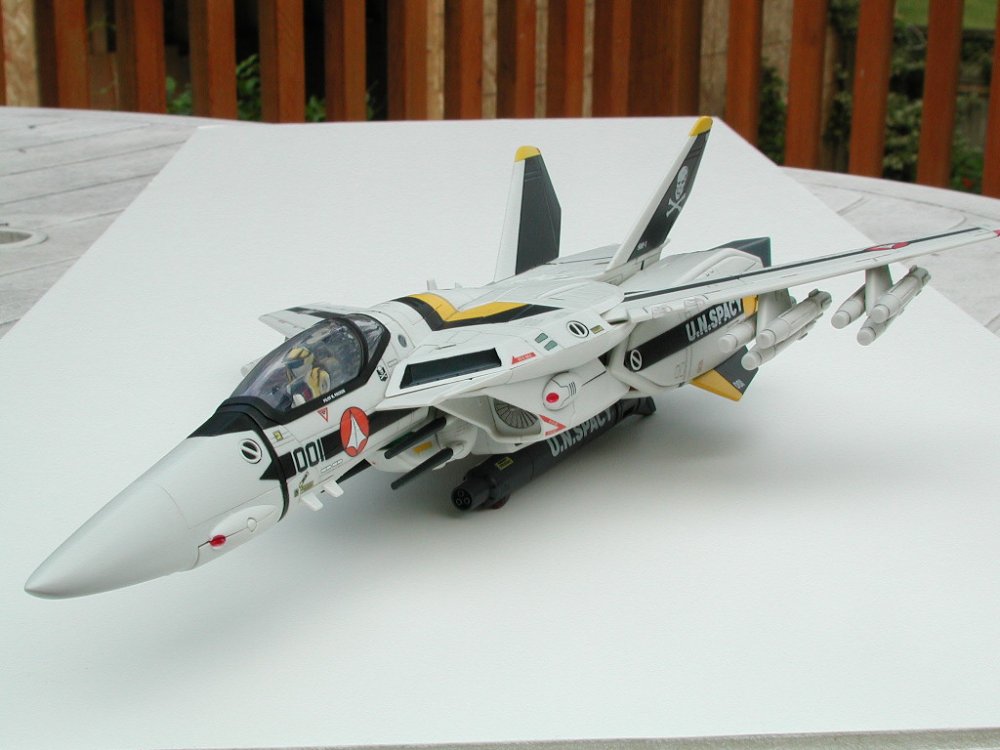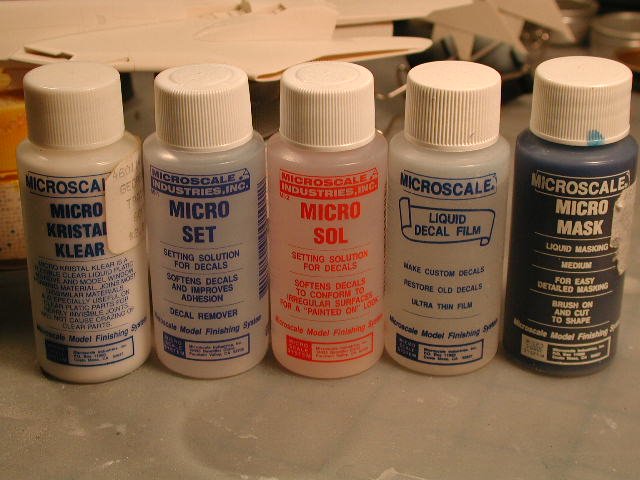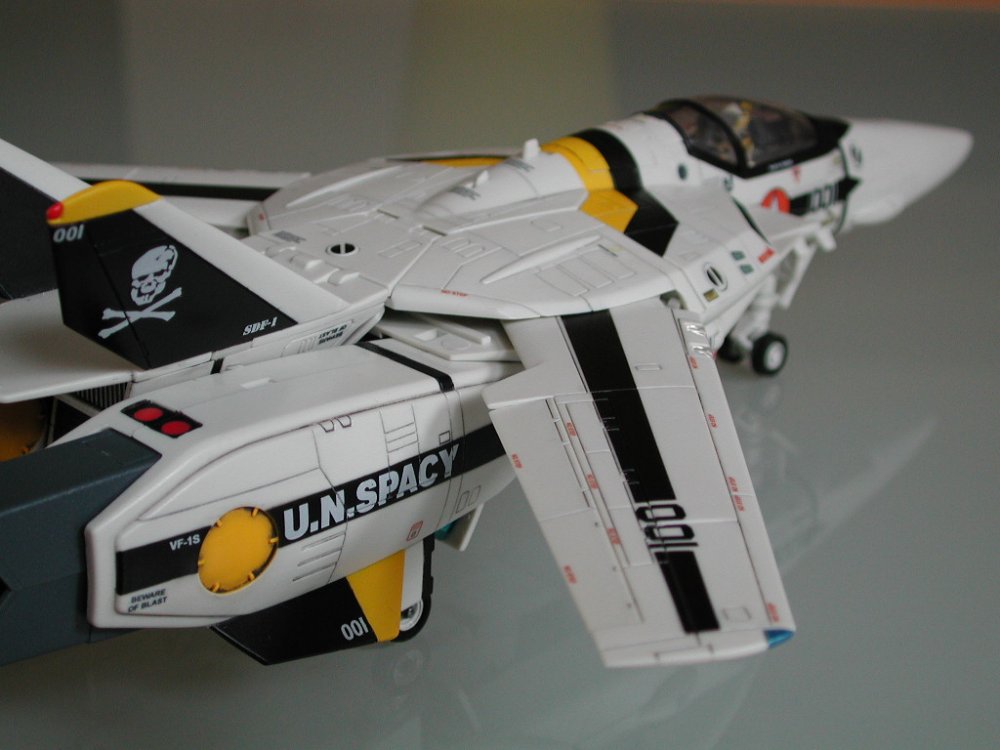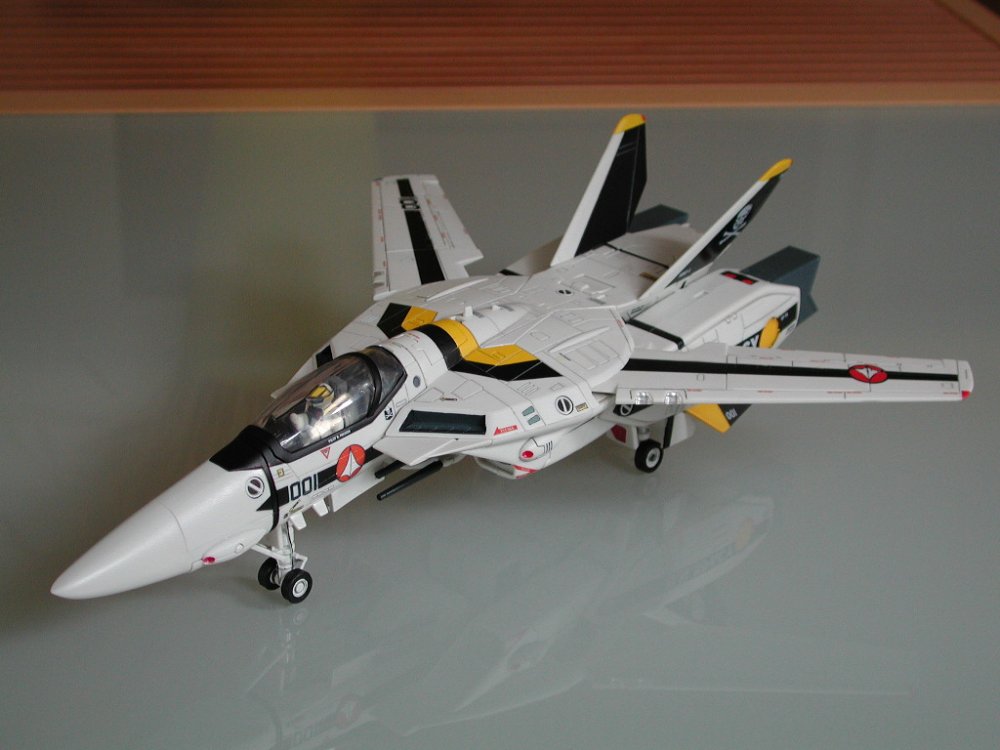-
Posts
4276 -
Joined
-
Last visited
Content Type
Profiles
Forums
Events
Gallery
Everything posted by wm cheng
-
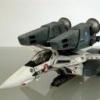
Bandai 1/850 Enterprise A photos...
wm cheng replied to wm cheng's topic in Anime or Science Fiction
Wow! Chronocidal, amazing work, so is this a hobby or it looks more like a proffessional job! I would love some larger high rez stuff, do you have a site, ftp or mind e-mailing some shots of this beauty to me - just for personal gawking of course This is my favourite Enterprise. -
Absolutely beautiful Anasazi37!! Great work as always, I love those little access panels for the RMS missiles, any chance they can be in a light grey or grey so they don't stand out so much - you know me for subtlety Can't wait for these puppies!
-
-
As mentioned this was the only major touble spot that I could be worried with. I don't know whether its designed poorly, or I just glued it down a little too low (I personally think its probably my fault ) but there is a bit of a transition problem from the fuselage section to the bulge flaring. I've built up this area with Mr. Surfacer, so only the primer will tell if this works. IF it works out fine, I will drill out the "gun" ports with a pin vise - I don't want to drill them out if there is any further sanding to be done in this area - since once hollowed out, they will be more delicate. Becareful, you can see the stress marks on the tabs that hold the rear rudder/stabilizers on already.
-
Another shot of some minor filling. Obviously that guy never built an ERTL/AMT kit Gawd they are awful!! I scrubbed this baby (old toothbrush) with dish detergent after the sanding to get all the loose grit away and its drying now awaiting its first coat of primer. After reading that article, I did take a closer look at the wing tip lights, and they appear a bit small - at least smaller than the scribed outlines on the wing. So I decide to error on the safe side and cut them smaller than the scribed lines on the wings. I was thinking that after I paint this sucker, and when I am ready to mount the lights, I can file down the wing tips to match perfectly the size of the supplied clear pieces.
-
Here I have sanded away most of the excess Mr. Surfacer. These Hasegawa kits fits generally good enough with just the Mr. Surfacer, I hardly ever have to use putty (none on this kit yet). Becareful since the plastic is quite soft and the engraved details are very fine, I find that I did lose some after sanding. But as you can see what is left of the Mr. Surfacer, there aren't really too many gaps.
-
Okay, that article has me all nervous now. So I've really scrutinized a lot of joints and decided to go safe and fill everything you see here. Sometimes I don't think a joint is necessarily a bad thing, it shows how the aircraft was put together and especially in transforming mecha, it shows that certain parts to move around. As long as the joint is purposeful, according to line art, and rendered correctly, with no unsightly or uneven gaps. So I decided to heed the other articles advice, you can only improve the model, the only loss is that there might be extra sanding involved - hey these might be problem areas anyways that will show up after a priming coat.
-
Hmm, phoot technique eh, well if its one world its light and lots of it! I use a Nikon 990 - I love this camera, its a bit old by todays standards, but has an excellent macro (can focus as close as 0.3 inches from lens) and one of the best light meters in a digital camera I have ever experienced. 1. LOTS OF LIGHT, usually I use the sun, or overcast outdoor daylight since I don't have studio lighting anymore. In direct sun, you get harsh shadows, so lightly overcast or in shadow outside is fine. 2. Simple background where ever possible - makes your subject stand out 3. Lots of depth of field - if you've got lots of light, you can stop down (use a smaller aperature or higher f-stop number) so the foreground and background is in focus. This tends to make the photo sharper and the scale larger. 4. Get close to your subject, have it fill the frame whenever possible. Thats about it, let see some of your creations!!
-
Yes, that step by step is very interesting - thanks for bringing that up - I always like to be warned. It is true that this kit is definitely not engineered like the other Hasegawa kits - the fit is indeed poorer. THere are more places to putty, and all those areas that he had pointed out are areas I have to fill. I won't get to it till Monday - the weekends are off limits for now I plan on doing a paint scheme like the one in the magazine scan below with differing shades of blue and finishes. I'll let you know how the fit goes later on - I'll only know after my first coats of primer.
-
Pretty much only planes. I love sleek modern aircraft - so that pretty much only means miltary fighter jets. Of course the Hasegawa Macross kits got me back into modelling again, so I will tie up my next 20 years building this stuff. But I really like anything that is sleek with nice lines, hence my current infatuation with Yukikaze. I would love to get a 1/72 F-14 in Jolly Rogers markings out some day soon. And of course my old love, Star Trek Enterprises - but the Bandai is the first thing in ST that I've touched in years. There is always the classic stuff the the X-Wing and the Babylon 5 Star Fury and someday an Viper (I've got the proper canopy and cockpit photo-etched and resin pieces)! I need to win a lottery!! Just need time.
-
I honestly believe the clear coat is the way to go to protect the decals - I even clear-coated my older 1/60 that had stickers on. The clear coat seals in that tiny gap between the edges of the stickers or decals. Look for some acrylic non-laquer clear-coat look for any alternatives that are water based - they are generally weaker and kinder to the undersuface. I am sure the Aquous stuff or Polly S clear coats would do - I doubt any of them will attack the plastic so the missile idea probabily would not help. If there is any concerns, it would be the painted areas, such as the black stripes or the yellow markings in the case of the VF-1S. Gernerally laquer thinner will take most thing off - so be warned. No, do not use tamiya liquid cement (unless you want a permanent bond). In fact don't use any "solvent" type glues - they actually "melt" a bit of the plastic to bond or fuse the pieces together. Now I'm not sure what ABS or kind of plastic these Yamatos use and whether they desolve like stryene which is what plastic models are and melts quite easily with liquid cement - but lets not tempt fate. Just common white glue will work best, because you can remove it after - hell, even rubber cement will do! Just stay away from contact cement, CA glues (unless you want it to be more permanent), epoxies, methel hydrate, or some of the more esoteric stuff out there. I'll post other poses later - after the weekend, I want to get back to my YF-21 thread!!
-
I believe the decals after proper MicroSOL and sealant under the clear coats will be just as durable as the paint finish on the Yamatos. That being said, of course you can scratch them if you wanted to, but I don't believe that just transforming them and playing with this toy is going to damage them. But I'll let you know if I scratch any of them off or if any of them fall off in the next little while. I have Yamato stickers on my 1/60 Yamatos, and they sometimes get caught because their edges are so thick - so in this case I feel the decals will actually last better. No I don't feel I have to be more careful with this toy because of the decals - I wouldn't have chosen decals if I thought I would have to change my playing habits. This is why I chose not to post-shade weather this toy - I think by post-shading, I might have to handle this toy differently. Time will only tell. I would love to hear from others on these boards about their decal storys. No, I didn't clear coat first then decal - I only clear coated it afterwards to seal in the decals. However I do notice that they do adhere better to painted surfaces than the bare plastic. I suppose one should wash the toy thoroughly in dish detergent to remove any grease from playing before decalling - but one should do that even when applying stickers too. My clear coat mixture was pretty much the same as my modelling about 2:1 semi-gloss to thinner ratio - its the best mix for my particular airbrush. The only thing was that I sprayed it on rather heavily (much more heavily than I do with plastic models), and several coats - thinking that if some layers scratch off during rough play - then so be it. The finish is identical to the bare plastic one, so one wouldn't notice if a few layers were to be scratched off. Plus all the details are so deep, I wouldn't loose much if the clear coat was thicker - just more protection. The only thing I masked off was the canopy and I retracted the gears when I sprayed. Everything else can be that semi-gloss sheen. In fact, I didn't even do a very consistent coat, I sprayed more where I had decals and markings, but I feathered it off to almost nothing at the nosecones, arms, and feet, since there was nothing to protect there - and I noticed that you really can't see where I had the semi-gloss clear coat and where I had just bare plastic. In hindsight, I guess I should have masked off all the clear parts such as the wing landing lights, and the blue and red lights on the rear gear doors - but I might just brush some future floor polish on them to bring back their glossiness. I can't vouch for all clear coats, but my ModelMaster Acryl semi-gloss clear coat did not react in any way to the Yamato paint finish. I actually feel that the clear coat better protects this toy overall.
-
Oh I keep forgetting to answer this question, the decals are not pre-cut nor the decal carrier film pre-cut to follow the contours of the designs. The entire sheet is one large decal film - and you have to cut each thing out individually (and trim as close to the designs as possible). I found the white stuff like the pilots names and skull harder to do since its printed on a white background paper too - but if you look carefully enough with a bright light and patience its managable. Don't any one get scared off with waterslide decals - this stuff is much easier than a model - its pretty forgiving. Hey ZorClone, as long as you didn't clear coat over it, I think it should still work. I would dab a lot over the decal and let it sit for a while - just let it evapourate on its own. I might do this a few times, and you could help it by pressing down on the edges when its semi-dry. Of course it works best when its wet, but it doesn't hurt to try - and apply and let dry several times. Post some pictures of your bird too - I'd like to see. A few people have asked me to do this customizing. Well basically, I don't normally do this for anyone else, its kind of a passion of mine. However since I am not working at the moment and I do have some free time (and need cash ), but its not cheap. Basically it takes two full days or so of full time work to get one of these babies up to par - the decals alone took 6 straight hours of work without breaks! Plus you need time to let the oil washes and clear coats dry - mask the canopy. Most people wouldn't/couldn't afford it, so its a labour of love - and I would recommend anyone to try it themselves - its most rewarding. That being said, if I were to do it, I would just charge my time (luckily when I do work I have a great rate, minus a substaintial bonus since I do love this stuff), probabily in the neighbourhood of $300usd or $500cdn + shipping (Valk and decals naturally not included). A props house would proabably charge twice that. Ah, if I don't get real work soon - I might do it for a new VF-1A Max with fast packs Anyways please enjoy - its really not as hard as you guys make it seem - its just time. And what better way of spending time than with Macross!!
-
Here's a shot above showing the light grey artist oil wash in the panel lines. Hey Graham - if you are reading this, I have a wishlist comment for Yamato - or a real challenge to customizers on this board. I wish Yamato would consider opening up the top chestplate intakes - I don't need it to be very deep, just like the Hasegawas would be fine with a little filler piece in behind. I considered cutting one out (and may still) but the plastic is pretty thick, hard and brittle. For something this scale 1/48 and all the thought that has been put into it - it seems a shame now that we have this flat closed intake right on top where you see all the time.
-
With the gears down and the forward diagonal crack/seam as large as it gets - its not too bad with the decals in place. I applied the decals with the gears up, so the seam closes up, then I let it dry and sliced it with a sharp x-acto knife before I extended the gears again. You'll notice that there is a whitish blob in the front gear door where the light is. I painted it silver and what you see here is a blob of Microscale Krystal Keeler drying - its essentially white glue that dries exeptionally clear that will form a lens over the silver painted light.
-
-
You can see from the rear how well the new decal skull blends into the black fins now that they have been clear-coated. The missiles also have a wash, just the blackened tailcones on the missiles makes a huge difference. I thickened the black stripe on the leg on the lower part. I neatened the upper edge, and added more black (with a Gundam Marker) to the bottom with a ruler to thicken the stripe. I thought it was painted too far up on the leg (IMHO). Again once the clear coat does its magic, the gumdam marker blends into the original Yamato paint finish. You can see that I also did the wash in the back of the backpack to pick out the vertical grill lines (but you can draw these in with a marker yourself).
-
That's what I like about oils, is that they dry very slowly. I don't believe the low odour varsol affects the Yamato paint that much - but I didn't really leave it on too long, I left it about a hour. If I really rub it (like in the yellow sections) I get a bit of faded yellow on my cloth, but you can't see any paint removed from the toy - but thats if I really rub it a lot. Boy I forgot how beautiful the fighter mode without the packs are - I think they are staying off until I get the decals for those too and when I touch up the pack nozzles. Here's a shot in-flight mode with the semi-gloss clear coat finished to tie in all the gundam markers and decals as well as sealing them in so that the toy can be handled more roughly. I decided not to do the weathering/post shading on these Yamato toys - I figure they are toys after all, and I would like to play with them unlike my models. Besides it really looks anime now. I'll reserve the realism for my plastic models. I didn't want to worry that I might scratch some of the weathering or post-shading off. You know, that diagonal seam doesn't bother me so much now, that the decals cover over the area - I did slice through the decals, so that when it splits, it won't rip the decal in unpredictable patterns.
-
Hey Hurin, I didn't put down anything else, just decaled onto the bare plastic where applicable. In hindsight I should of washed the entire toy before hand - but I was just too excited to wait any longer - I had to begin. The gloss black was applied to the tailfins since decals always adhere better to glossy surfaces - and it didn't matter since I was going to clear coat the entire thing in a semi-gloss to match the existing finish anyways. A few people have been asking me about MicroSOL. MicroSOL is a decal solvent that can be applied with a brush. Generally it's really potent stuff and can desolve most decals - however these ones that Anasazi provides are extremely thick and much more resistant to MicroSOL than most model decals. So they are much easier to apply. I would soak the decals as usual in water maybe 20sec. Then brush on the MicroSOL onto the Valkyrie where the decal will sit, and then transfer the decal to the Valkyrie surface on top of the MicroSOL. I then brush on a liberal helping of MicroSOL onto top especially around the edges and let dry. I might press the decal down a bit once its semi-dry and won't slide around anymore. I usually brush on another liberal helping of MicroSOL once the thing is down and had a chance to dry again to further soften it and bring down the edges. A hint would be to get a really sharp new blade for your exacto knife when trimming the decal film - key is to get the blade to press down on the film when cutting, not lift the film when cutting - difficult on curved profiles. This will help the film to lay down on the toy better when its been transferred. Hope this helps. The panel lines are just done the same way I do my models with an artist oil wash, I think there is an explaination half way down on page 2 of my older thread: http://www.macrossworld.com/cgi-bin/mwf/ik...t=ST;f=8;t=4555 I'll post some pics later when I get to the clear coat.
-
Hey it looks great - amazing micro works. Maybe you could take a picture along side of something we know the scale of - I know they are small. Keep up the good work, what about the canopy on that Gerwalk - I know its small, but have you thought about cutting thin black decal strips and piecing them together to form the canopy frame, the VF-1 is pretty much straight segments. I love the VF-5000G
-
Hey I just posted a sneak peek at my 1/48 decaling. http://www.macrossworld.com/mwf/index.php?...t=ST&f=4&t=1582
-
Oh, did I mention that I did a light grey panel wash with artist oil paints on the toy before - thats why some of the panel details stand out. Sorry to post before I was finished, but I just couldn't wait... I forgot how beautiful this bird was without the fast packs - its like discovering it all over again. Naturally, when are the fast pack decals going to be ready? After the decals dried, I lightly cut them with an exacto knife following the panels - then applied more MicroSOL liberally (did I mention that MicroSOL didn't dessolve these decals - it just soften them like MicroSET) So I think these decals are pretty sturdy and foolproof as far as decals go! I do highly recommend MicroSOL, the decals have a bit of problems adhering to the bare plastic - but not so with the MicroSOL. Nothing beats the look of decals - they really look painted on - no matter how thick the decals are, they are nothing compared to the thinnest stickers (IMHO) Hopefully I will post more pictures when I am actually finished, this is just a teaser. Oh, in this picture I would definitely recommend the black wash inside the yellow ankle discs on the legs, they really pop that out!
-
Hey all, I just couldn't wait - I'm so happy with the new waterslide decals I got from Anasazi37 - I would recommend them to all, your Valks are just naked without them! I just recieved them last night, and spent the better part of 4 hours today applying them. Man does it ever make a difference! I masked and sprayed the rear tails gloss black to cover over the existing white skulls - Anasazi was kind enough to provide two complete white skulls, so in correcting the crooked skull problem, I decide to do both sides so they match. His skulls are excellent, very sharp and a bit more solid than the Yamato stencil. The decals are very thick - in fact a bit thick for my modelling taste, however, they are perfect for this toy - I think they will stand up to some handling. I used a lot of MicroSOL, in fact, the solvent doesn't seem to wrinkle up these decals as it does with most decals - however, if you futz with it enough, it will tend to remove/eat away at the protective coating that Anasazi put on - but don't worry, I would recommend clear-coating the entire thing to protect the decals further and tone down the shininess so that it all matches the finish of the toy. I intend to spray it all with ModelMaster Acryl semi-gloss - its a finish almost exactly like the bare plastic finish that Yamato has - a bit on the flatter side maybe. Anasazi included more decals than what I would consider cannon - I went by the Hasegawa decal placement sheets for both the Battriod and fighter mode. However not all stenciling was present, but all the major ones were there - enough to occupy me straight for 4+ hours! However, there were a few pieces that were a touch too big - I didn't end up using the "Danger air intake..." stencils and had to switch the backpack "Beware of Blast" stenciling with the legs which were more the correct size. I ended up using the larger ones on the insides of the rear of the legs. The yellow circular dot on the backpack is provided and fits - another omission corrected. I also ended using all the "no steps" provided for the wings throughout the plane. There are a few too many since the spacing of the forward slats on the wing and the lights doesn't really allow for the "no step" placement to match the Hasegawa kits - so the extras were used on the back, airbrake and boat-tail. I didn't like the fact that the "no step" provided for these areas were larger than the wings - I feel that these stenciling should all be the same sizes. After the decals, I decided to clean up the black stripes around the plane. Not that there was significant overspray, there were just some soft edges and strips that didn't perfectly line up (I know really anal... ) I just took a ruler, with a black Gundam Marker and cleaned up / traced the edges of the stripes. When I clear coat the entire thing in semi-gloss, the common finish throughout will practically make the Gundam Marker invisible. I haven't decided to do any light post-shading on this toy yet - I'll decide after the clear-coat, then if I don't like it, I can still take it off without disturbing the decals and marker beneath.
-
You gotta watch how low you go with the PSI, the lower you go, the more splattering and larger the spray dots get. I always try to set as high as a PSI as I can get away with - without it drying before the paint hits the model I usually shoot around 20-25 PSI normally, and adjust the thickness of the flow to compensate depending on the colour. Lights require thicker paints, and darks can be thinner. Post shading can be really thin - since you don't want it opaque. The only time I have turned down the pressure is for the Alclad metallizer stuff which recommends 12-15 PSI. You want the paint to "atomize" inside the airbrush so its thoroughly combined with the air stream when it leaves the airbrush and hits your model - this way it gives a very even non splattering pattern, you shouldn't be able to see any dots whatsoever even when you look very closely. Recon, what do you mean by 2mm thickness - surely you don't mean the thickness of the paint do you? Grayson, I did try smoke before, but since its so glossy, its hard to tell exactly what the end results are. Glossy paints tend to look darker, until you spray a semi-gloss or flat clear coat on them, then all of a sudden the lighten up. I'd like to post-shade as close to the final finish as possible to see whether I still need more - then I can clear-coat whatever I want afterwards. Yes too little PSI clogs, but too high PSI also clogs - depends on the type of paint you use - even when they are all Tamiya. I find flat paints dry quicker than glossy paints, hence clogs easier. But the Tamiya Clear stuff clogs the worst which are extremely glossy - go figure! Of course, all this is tempered by the humidity in which you are spraying in, the moisture tap and your compressor. Its a little experiment every time I sit down to spray something
-
A Tomcat phreak is a good thing - so am I, its my favorite bird of all time (real that is) I realise the forward slats will be a given, they'll stay out, but the rear flaps must be an easy thing? no? make a hinge by adding pins to the ends like the Yamato 1/48 flaps right? Well, I haven't thought it out yet - still concentrating on the task at hand - new waterslide decals for my 1/48 VF-1S and then the 1/72 YF-21 to finish off.

